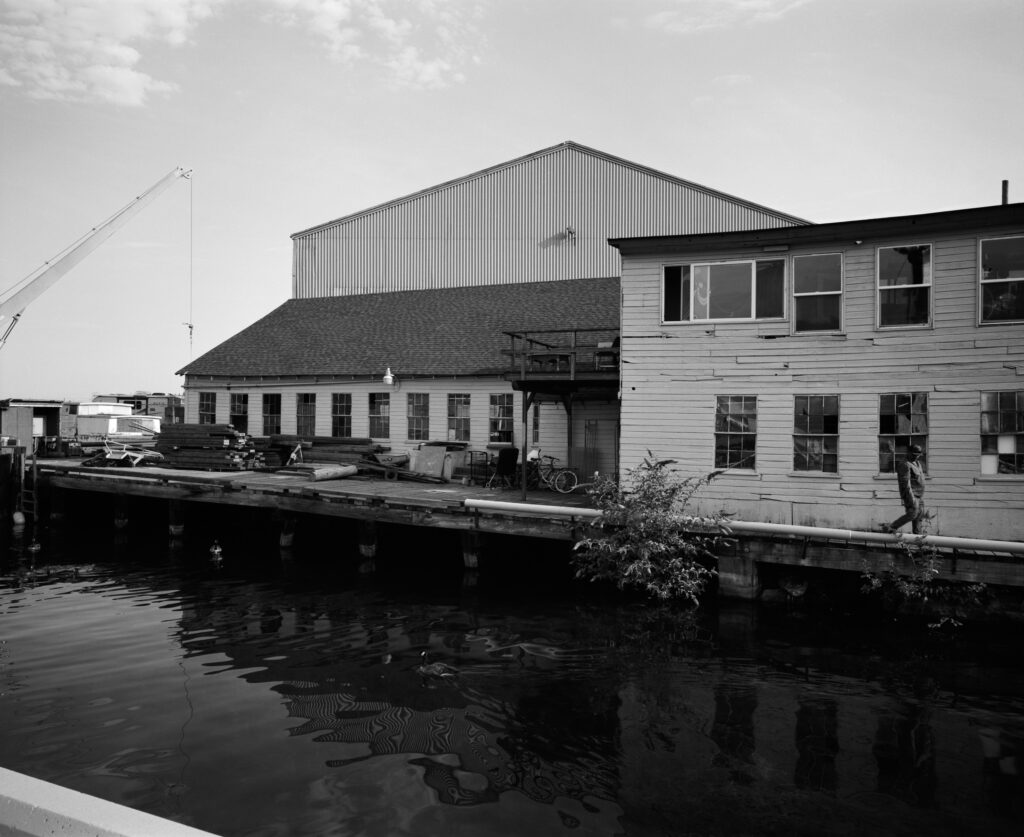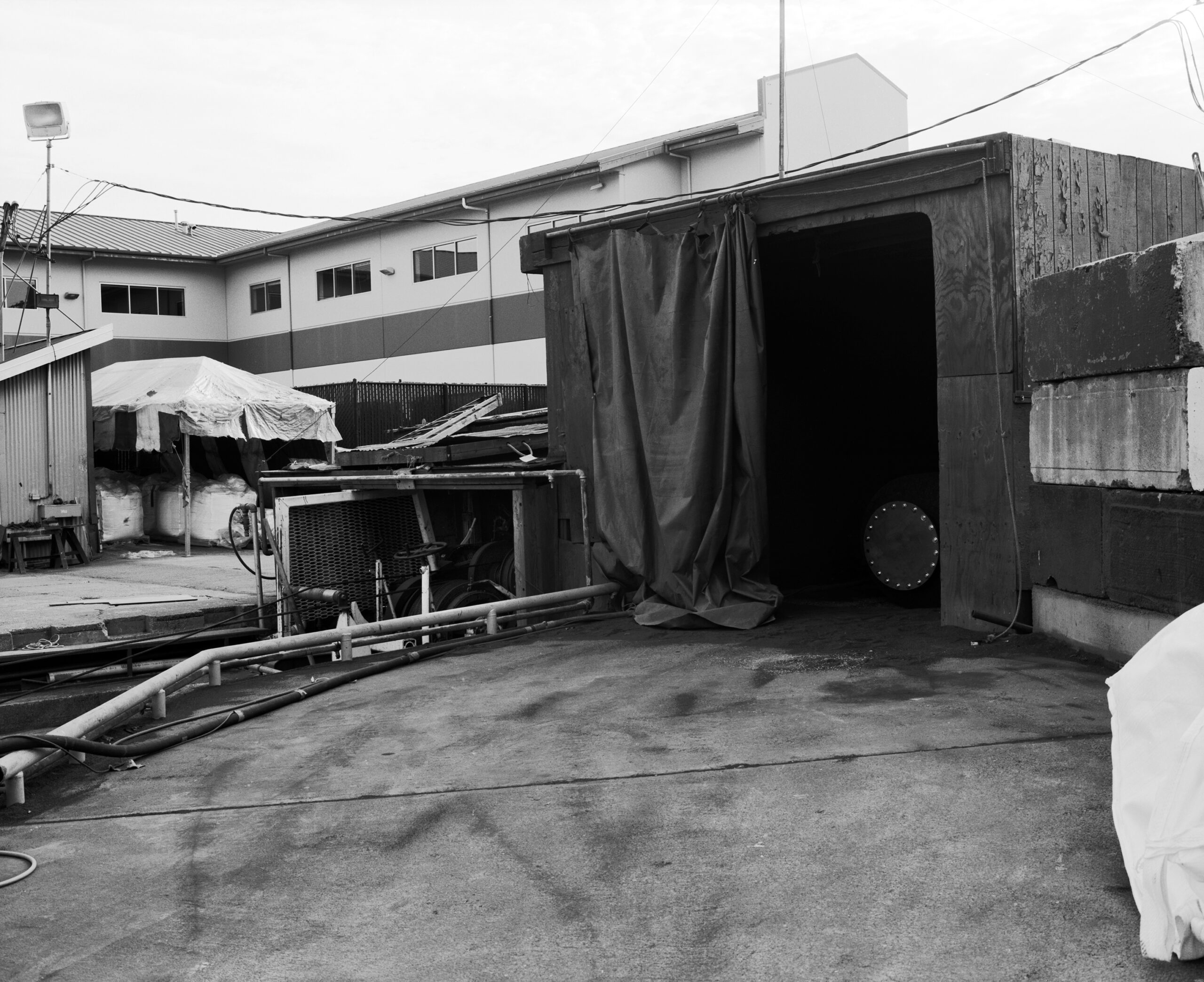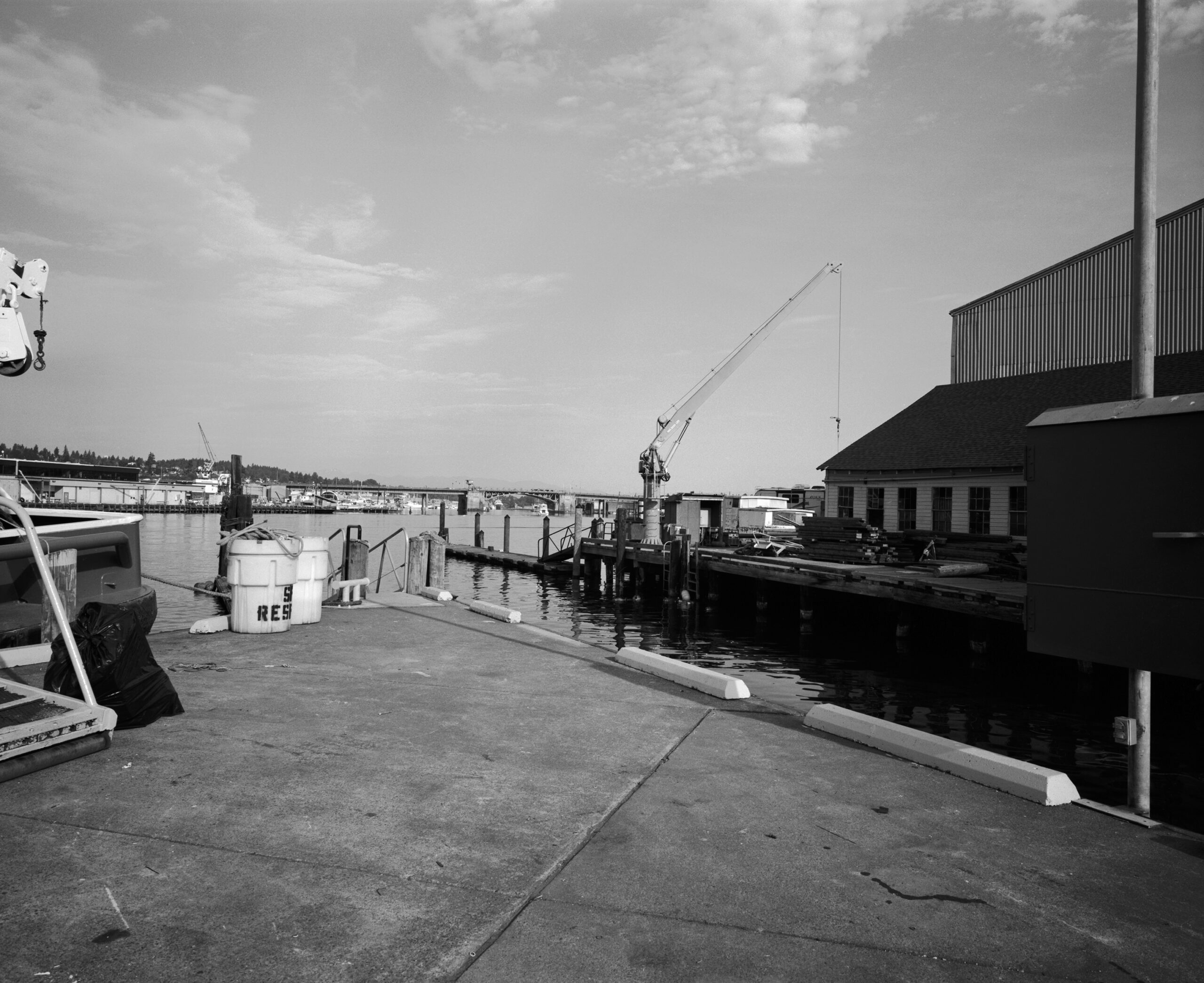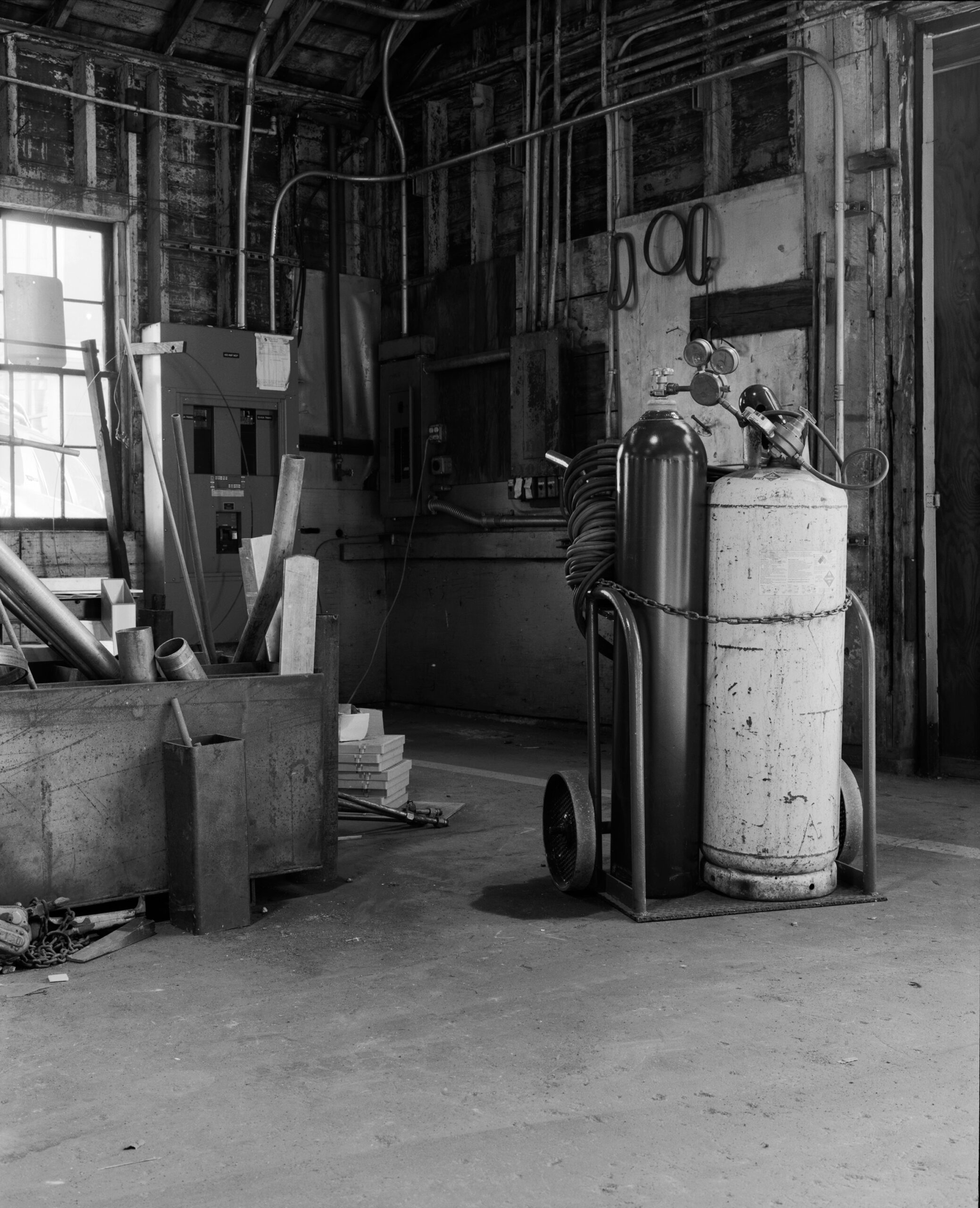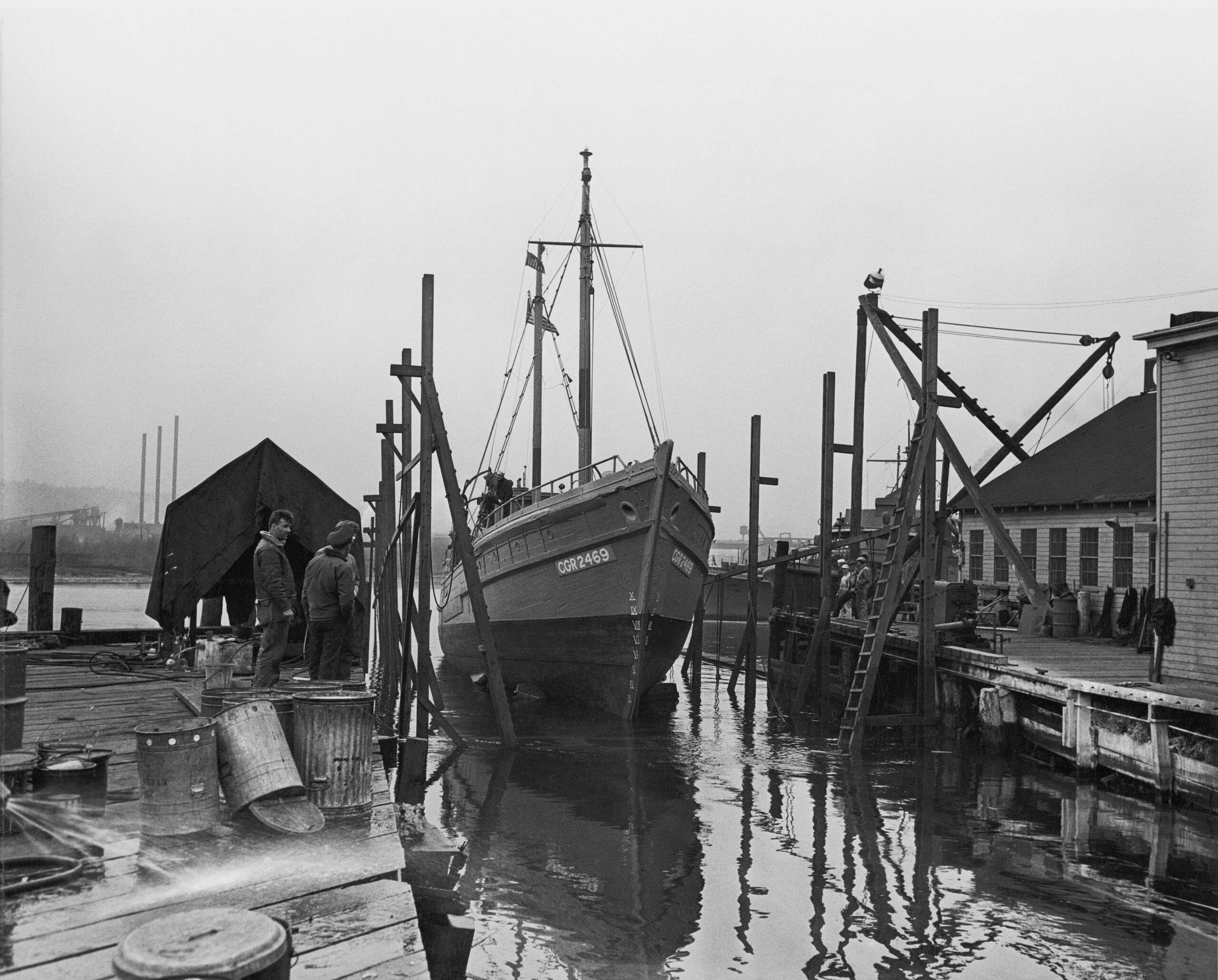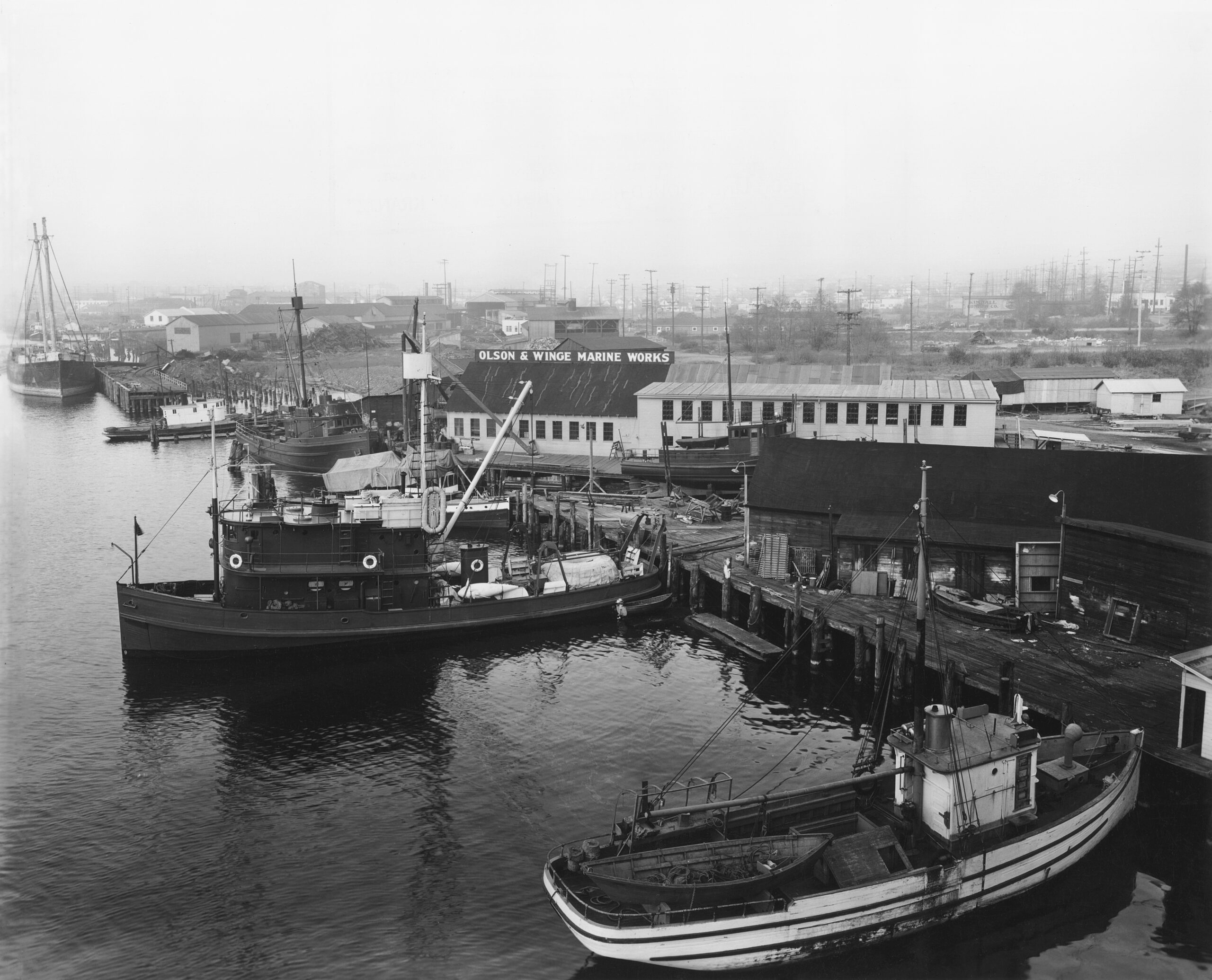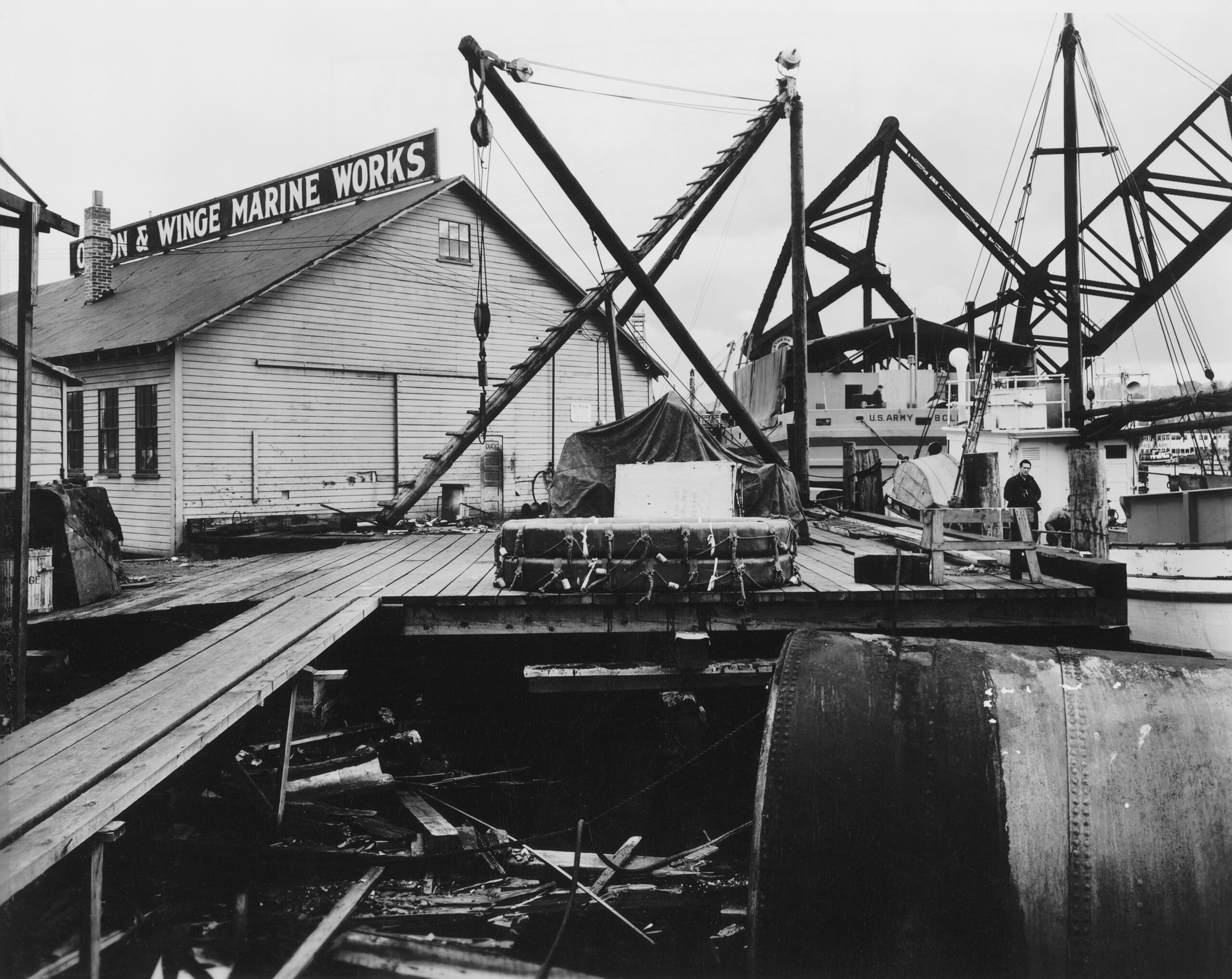Story and Photography: Abby Inpanbutr
This article is part of a series highlighting the vibrant people and industries that make up the working waterfronts of the Maritime Washington National Heritage Area. Dive into more stories from our Working Waterfronts photo series here.
Tucked away along the north shore of Salmon Bay, hidden behind Leary Way and the industrial landscape of Ballard, is one of Seattle’s oldest shipyard operations. The history of Marine Fluid Systems is a well-kept secret among local residents and even the company’s own workers. Those workers, as they repair and repaint steel hulls, may know that their shipyard is a family business now in its second generation, but few are aware that the site has been operating as a shipyard continuously for more than 120 years.
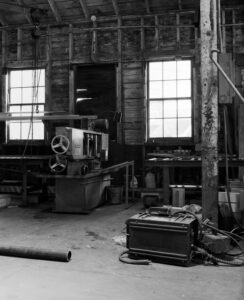
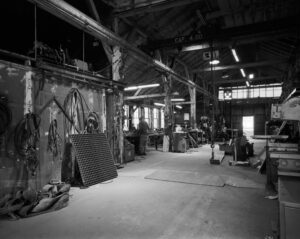
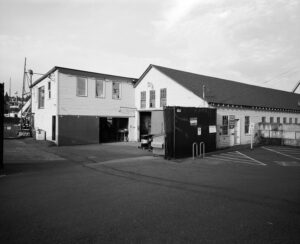
The number of long-running Seattle shipyards has been steadily dwindling for some time. Many prominent yards have closed in the recent past: Foss, which once dominated the south side of the ship canal; Vic Franck’s Shipyard, which left Fremont; and the Fishing Vessel Owners’ Marine Ways, established at the Fishermen’s Terminal more than 100 years ago by halibut fishermen who wanted their own yard to build and maintain boats. Pacific Fishermen Shipyard and Lake Union Drydock remain prominent establishments, but many smaller supporting industries are being pushed out by new development. Meanwhile, Marine Fluid Systems quietly carries on a proud tradition just east of the Ballard Bridge. Few remember how well-known the location once was. At one time, the site was bursting with activity, especially in the years leading up to and during World War II.
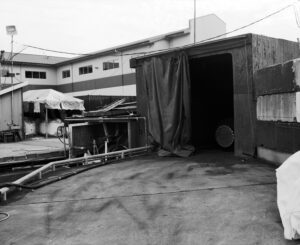

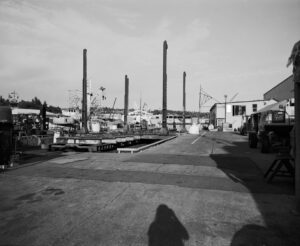
The north edge of Salmon Bay’s shoreline at the west end of the cut between Ballard and Fremont was originally a tidal zone. Once white settlers moved into the area, it became known locally as Halibut Flats: muddy, salty, and not good for much. Longtime residents, now passed, remembered it as a wild playground for the neighborhood children, with little oversight and occasional drownings. After the Ballard Locks were completed in 1917, the tidal exchange was cut off, and the stabilized shoreline of Salmon Bay became available for new industries and businesses, including several shipyards.
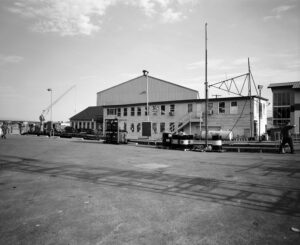
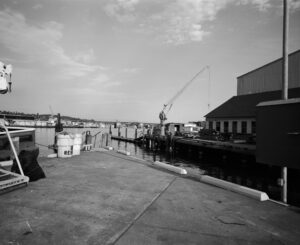

Olson & Sunde were among the first to set up shop around 1919. Oscar Olson and Norman Sunde had been around since the beginning of Seattle’s shipbuilding industry. Sunde had been investing in fishing boats and boat building since the early 1900s, when Port Townsend was the prominent outpost of the Sound. Olson’s reputation was founded on years as the foreman machinist at the King & Winge shipyard—perhaps the most storied yard in all of Seattle’s history—where he had overseen the mechanical operations of the most famous ship that yard ever built: the namesake King & Winge, launched in 1914.
The Olson & Sunde yard was state-of-the-art for its time, with marine railway that could haul out a ship up to 125 feet long and 500 tons. Still today, Marine Fluid Systems boasts that their ways has one of the largest capacities around. There was also a crane, a machine shop, and a blacksmith’s shop on site. The Olson & Sunde shipyard, like most shipyards of the time, was busy building and launching wooden boats through the 1920s. The 1930s brought difficult times. Toward the end of that decade, Norman Sunde retired. His place was taken by Carl Winge, nephew of Al Winge, founding partner of the King & Winge shipyard. Shortly after Carl’s arrival, the impending world war lifted the economy and brought some of the busiest and most productive years to the Seattle waterfront. During the early 1940s, an endless stream of jobs kept the newly renamed Olson & Winge shipyard filled to capacity. Work included modifying fishing boats for naval use (patrol boats known as the “yippy fleet”) and building 250 new working vessels for the Navy.
The names Olson and Winge were written in big, white, block letters over the wooden shop building that still sits just west of the ways—names that carried the pride, tradition, and craftsmanship for which the yard was known. The shop at the Olson & Winge shipyard manufactured all kinds of mechanical accessories for working boats such as winches and gurdy rollers. The large shop buildings that bustled with activity during the Olson & Winge years are the ones still used by Marine Fluid Systems today.
In 1941, a finely built ship with a clipper-style bow painted in flat gray docked at the Olson & Winge shipyard. The workers felt an immediate sense of recognition but could not place it. Finally, Edward Winge, son of Carl Winge, went running up to the office to find his father. “It’s the King & Winge!” he exclaimed. “The King & Winge come home!” It was unforeseen and unplanned, but the King & Winge, painted over in her service as a Columbia River Bar pilot boat, had come back to her own people for repair.
During her long and eventful career, the King & Winge remained among Seattle’s most famous ships, the biggest halibut schooner ever built. Her greatest adventure came to her immediately after she was launched, when she was sent to the Arctic to rescue the stranded crew of the exploration vessel Karluk, which had been crushed and sunken by the ice. Other vessels had attempted to reach the stranded survivors, but only the King & Winge, with her ironbark-clad hull, had been able to complete the mission. Now, returning home to her original builders, she was met with joy and great pride.

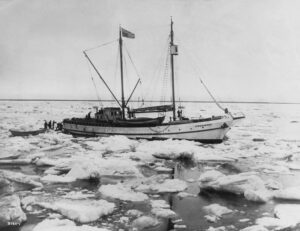
After the end of World War II, work at the Olson & Winge shipyard slowed, and the yard closed at the end of the 1940s. The site continued to operate as a shipyard, eventually becoming the Union Bay Shipyard, which built steel hulls for crabbing and seining in the Alaska fisheries. In the early 1990s, it became Marine Fluid Systems. Meanwhile, the surrounding Ballard waterfront was built up, and the name Olson & Winge was largely forgotten.
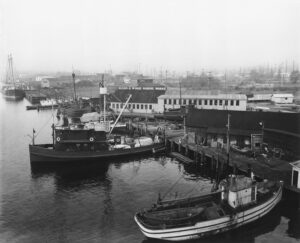
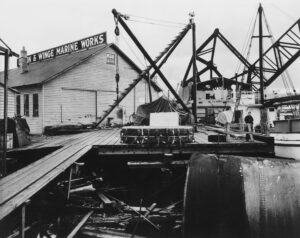
It has been many years since a new vessel was constructed on the site of Marine Fluid Systems, but many boats are repaired and repainted there. The main shop buildings, where complex machine work is still carried out, are the same ones built by Olson & Sunde during the 1920s. The marine ways and winch are much the same as well. Today, the boats serviced are often members of the crab fishing fleet, once a wildly lucrative business now facing drastic drops in crab populations due to overfishing and climate change. But no one at the shipyard seems worried about the constant shifts in the industry. They may not know the rich history of their own workplace, but they know from the persistence of the buildings and equipment that their shipyard has been around long enough to endure a lot of change and will weather more to come.
